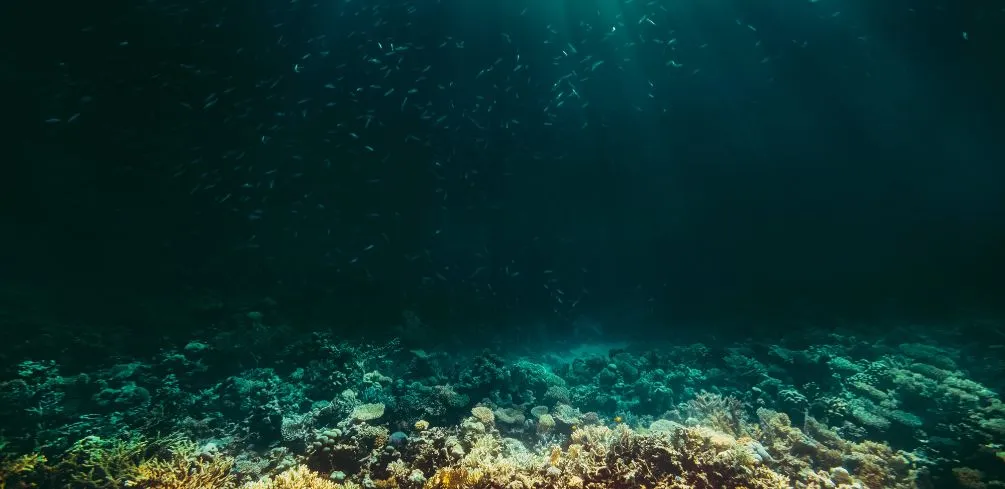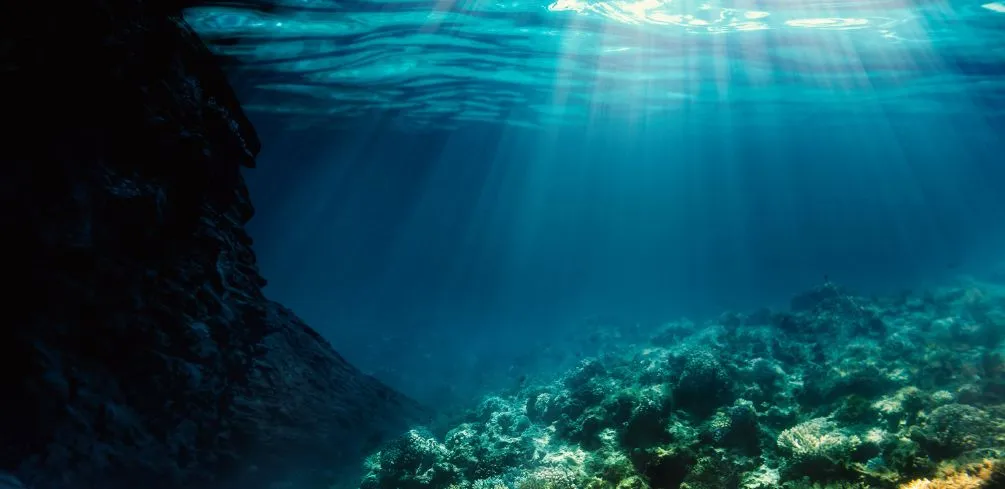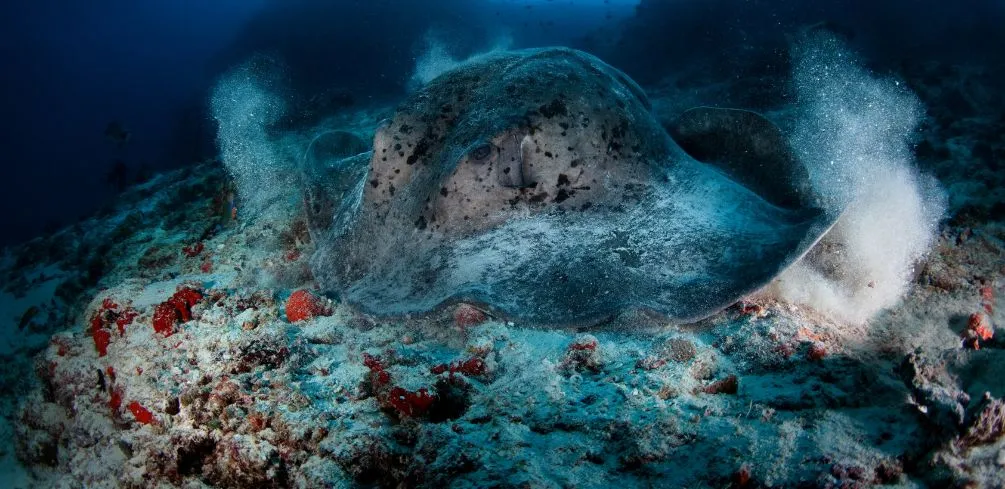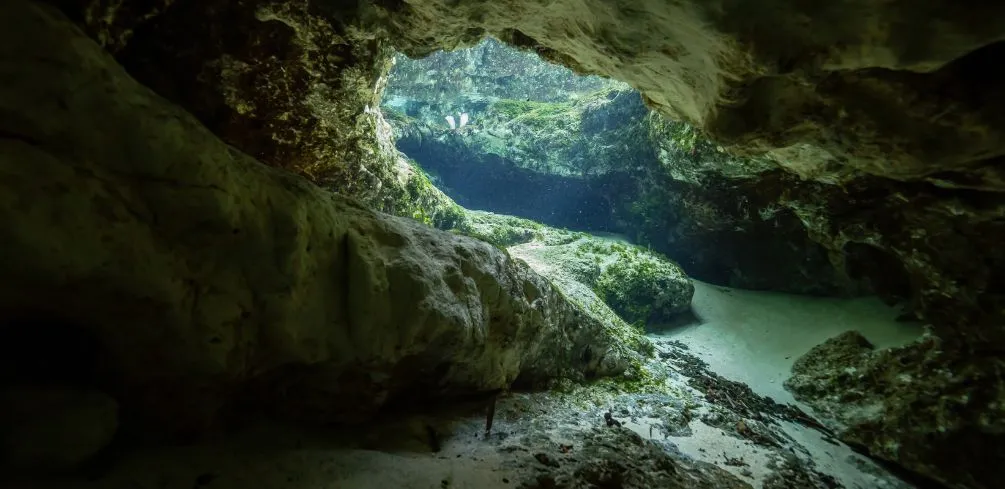Have you ever wondered what strange and unusual features lie beneath the surface of our oceans? Hydrothermal vents are among the most mysterious and fascinating phenomena in our world.
These deep-sea hydrothermal vents are found on the seafloor, typically near mid-ocean ridges or subduction zones. These unique features create a rich, vibrant environment that is teeming with life. In this article, I’ll be exploring the unusual features of hydrothermal vents, so keep reading to learn more!
Hydrothermal vents have been around for millions of years, but they were only discovered by humans in 1977. They occur when seawater enters Earth’s crust, is heated by volcanic activity, and is forced back out into the ocean through large openings known as ‘chimneys.’
These chimneys can reach up to three meters high and are made up of a mixture of minerals such as iron sulfide and zinc sulfide. The water released from these vents can reach temperatures as high as 700°F!
The environment surrounding hydrothermal vents is unlike any other on Earth. It’s this extreme temperature difference between the hot vent fluids and cold seawater that creates a rare ecosystem full of fascinating organisms like bacteria and shrimp that thrive in environments without sunlight.
This environment also contains an abundance of chemical compounds such as hydrogen sulfide, methane, ammonia, and carbon dioxide – all essential elements for life to thrive! So if you’re interested in discovering more about these incredible features of our planet’s deep sea landscape, read on to learn about the unusual features of hydrothermal vents!
Meaning And Location of Hydrothermal Vents
When I hear the term ‘hydrothermal vents,’ I’m instantly taken back in time to a period of discovery. A period where scientists uncovered an amazing phenomenon found deep within the ocean’s depths – hydrothermal vents.
Hydrothermal vents are natural seafloor openings emitting hot, mineral-rich fluids from Earth’s interior. These vents provide a unique habitat for organisms that have adapted to the extreme conditions of the deep sea.
The exact location of hydrothermal vents can vary, but they are typically located along mid-ocean ridges, near tectonic plate boundaries and volcanic arcs. In fact, these regions often host clusters of multiple hydrothermal vent sites.
As well as providing a source of heat and nutrients, these clusters can also be home to many species of fish, crustaceans, and bacteria – all adapted to living in such extreme conditions.
The formation of hydrothermal vents is driven by geothermal activity beneath the seafloor; this means their position can be unpredictable and ever-changing. Despite this uncertainty, their presence is incredibly significant for marine life; they create an oasis in an otherwise barren seabed environment.
Characteristics Of Hydrothermal Vents
Having discussed the definition and location of hydrothermal vents, let’s take a look at their unique characteristics. Hydrothermal vents are found in the deep sea, usually where two tectonic plates meet.
These vents are characterized by their high-temperature range; they can range from temperatures as hot as 400°C/700°F+ to temperatures as low as 4°C/50°F. This wide range of temperatures is due to the seismic activity in the area that pumps hot water out of the Earth’s crust.
The chemical composition of hydrothermal vents is also unique. When compared to other oceanic areas, these vents contain higher levels of sulfur compounds, carbon dioxide, and hydrogen sulfide.
These compounds mix with minerals that form deposits around the vent openings. In addition, these mineral deposits often contain valuable metals, including copper, zinc, lead, and gold.
Due to their unique features and composition, hydrothermal vents serve as a special environment for a variety of marine animals who live near or around them. Some species that inhabit these areas include crabs, snails, mussels and tube worms which all take advantage of the food sources available there.
As such, hydrothermal vents help create an oasis in the dark depths of the ocean floor where life can thrive despite extreme conditions such as no sunlight or very little oxygen.
Biology Surrounding Hydrothermal Vents
I’m sure you’ve heard of the deep sea creatures living around hydrothermal vents, but do you know what makes these organisms so unique? Hydrothermal vents are formed when submarine volcanoes erupt, releasing a mixture of heated water and chemicals known as hydrothermal fluids.
This extreme environment is home to an array of organisms that thrive in temperatures that would kill most other life forms.
Microbial life is the most abundant form of life found near hydrothermal vents, forming the basis of what scientists call “vent ecosystems.” These microbial mats are composed primarily of bacteria and archaea and often contain photosynthetic organisms such as algae.
The bacteria and archaea living in these mats produce energy by oxidizing hydrogen sulfide released from vent fluid, allowing them to survive in the otherwise inhospitable environment.
The extreme conditions present at hydrothermal vents make it difficult for animals to live there, but many species have adapted to this hostile environment over time. Animals such as shrimp, crabs, tube worms, and clams can all be found living near hydrothermal vents.
These creatures rely on chemosynthesis rather than photosynthesis for energy production, making them some of the only animals in the world capable of surviving in such an extreme environment.
These remarkable creatures truly demonstrate the resilience and adaptability of life on Earth; despite inhabiting one of the harshest environments on our planet, they manage to survive and even thrive!
Geology Of The Hydrothermal Vent Environment
Hydrothermal vents are amazing phenomena that can be found deep in the ocean’s depths. They are formed by a complex interaction between the shifting of tectonic plates and seafloor geology.
The hydrothermal vents originate from the oceanic crust, where water is heated to extreme temperatures due to volcanic and magma activity. This causes hot, mineral-rich water to gush out of cracks in the seafloor.
The unique geology of hydrothermal vents provides an environment unlike any other on earth. They are home to some of the most unique species, such as tube worms, crabs, and giant clams. The combination of heat, minerals, and organic matter makes it possible for these creatures to survive in a place that was previously thought inhospitable.
The study of hydrothermal vents has helped us gain a better understanding of plate tectonics and oceanic geology. It has also shed light on how life is able to exist in extreme habitats, showing us just how resilient life can be when faced with challenging conditions.
We now have a greater appreciation for the vastness and complexity of our oceans and the wonders they contain.
Exploring The Deep Sea
It is a journey of discovery, diving deep beneath the waves to explore the unknown. The depths of the sea have been an enigma for centuries, and yet it has only been in recent years that we have begun to unlock its secrets. One of the fascinating discoveries made in recent times is hydrothermal vents – unique features found on the ocean floor.
Hydrothermal vent exploration allows us to gain insight into a whole new world. Geologically speaking, these vents are formed when hot magma interacts with cold ocean water, and as such, they exist in a range of temperatures and pressures.
These extreme conditions provide an environment that supports specialized deep-sea biology and ecology, making them incredibly interesting places to explore.
The unique geology of hydrothermal vents allows for a variety of different studies from both biologists and geologists. Biologists can study how organisms adapt to their surroundings, while geologists can learn about how rocks are formed in these extreme environments.
In addition to their scientific value, hydrothermal vents also offer us an incredible glimpse into how life forms in some of the most inhospitable corners of our planet – an experience that few will ever get to encounter firsthand.
Frequently Asked Questions
What Are The Environmental Implications Of Hydrothermal Vents?
When we consider the environmental implications of hydrothermal vents, it’s important to recognize the potential long-term impacts on our climate and ecosystems. Hydrothermal vents are deep-sea structures located along mid-ocean ridges that emit mineral-rich fluids into the surrounding ocean water. They are unique environments, as they house a variety of deep-sea species that thrive in these conditions.
What makes hydrothermal vents so significant is the potential impact they have on our climate and ocean acidification. As these vents emit mineral-rich fluids into the surrounding environment, this can cause an increase in atmospheric carbon dioxide and lead to global warming.
Plus, due to their high levels of hydrogen sulfide, these vents can also contribute to ocean acidification which can have devastating effects on deep-sea ecosystems.
The environmental implications of hydrothermal vents should not be taken lightly. An increase in atmospheric carbon dioxide can exacerbate climate change and lead to extreme weather events such as droughts and floods.
Furthermore, ocean acidification can disrupt the delicate balance between different species living in deep-sea ecosystems, leading to population declines or even extinctions. It is, therefore, vital that we take action now to mitigate the potential effects of hydrothermal vents on our planet.
What Is The Deepest Hydrothermal Vent Ever Discovered?
As the saying goes, ‘the more you know, the more you realize how little you know.’ This is especially true when it comes to the depths of our oceans and the hydrothermal vents that exist within them. So what is the deepest hydrothermal vent ever discovered? Let’s dive in and explore!
When we talk about hydrothermal vents, we’re talking about ocean depths reaching up to 5,000 meters (16,000 feet) below sea level, which was the deepest discovered.
Hydrothermal vent discoveries have been a boon for many scientific disciplines. By studying these deep sea vents, scientists are able to gain insights into the processes of Earth’s geology and biology.
They can also learn more about how life evolved on Earth over millions of years and even gain insights into potential life forms that could exist on planets beyond our own.
In spite of considerable research efforts to date, many questions remain unanswered regarding hydrothermal vents and their depths. However, with each new discovery, scientists are uncovering new secrets about these mysterious features of our oceans and gaining a deeper understanding of the incredible complexity of life on Earth.
How Can Hydrothermal Vents Be Used To Generate Energy?
Hydrothermal vents are a unique source of energy that can be used to generate power. Because of their ability to produce large amounts of heat, hydrothermal vents are an ideal source of energy production. By harnessing the energy produced by these vents, we can generate power for use in homes and businesses.
There are some countries already using hydrothermal vent-generated electricity to power their homes and businesses.
There are numerous benefits associated with hydrothermal vent generation, including its ability to produce large amounts of renewable energy and its cost-effectiveness compared to other forms of energy production.
Additionally, it does not emit harmful pollutants like many traditional methods do, making it more environmentally friendly. Hydrothermal vent generation also offers advantages in terms of safety due to its lack of risk from nuclear radiation or toxic chemicals that may be released during traditional means of generating power.
Given these advantages, it’s no surprise that hydrothermal vent generation is gaining traction as a viable form of renewable energy production across the globe. With further investment and development in this area, hydrothermal vent-generated electricity could become a major part of our global energy mix in the near future.
What Are The Economic Benefits Of Hydrothermal Vents?
The economic benefits of hydrothermal vents are vast and varied, but one thing is certain: they have the potential to revolutionize energy production and resource extraction and even have an impact on climate change. Like a modern-day ‘gold rush,’ hydrothermal vents provide an unparalleled opportunity to capitalize on their unique features in order to generate substantial profits.
Here are some of the key benefits:
- Energy production: Hydrothermal vents contain high concentrations of heat that can be turned into usable energy. Not only can this energy be used to power homes and businesses, but it can also be used in innovative ways to create more efficient transportation systems and industrial processes.
- Resource extraction: Mining companies could use the unique characteristics of hydrothermal vents to access valuable minerals and metals from deep within the ocean floor. This technology could open up huge new sources of precious resources that were previously inaccessible.
- Climate Change Impacts: By using the natural properties of hydrothermal vents for energy production, we could reduce our reliance on fossil fuels, thus reducing emissions and helping to mitigate global warming.
Clearly, there are many economic advantages associated with harnessing the power of hydrothermal vents. From providing renewable energy sources to unlocking hidden resources from beneath the ocean floor, these unique features offer a wealth of potential opportunities – provided we act now.
It’s time we stopped talking about what could be done with these incredible phenomena and started doing something about it!
How Is Climate Change Affecting Hydrothermal Vents?
Climate change is having a significant impact on hydrothermal vents, which play an essential role in the global environment. Hydrothermal vents are located deep in the oceans and are known to produce geothermal energy and minerals. As the climate continues to warm, these vents may be affected in a variety of ways.
The primary way that climate change is impacting hydrothermal vents is by altering their temperature. As the global temperature rises, so does the temperature of ocean water around the vents.
This can have a variety of effects on their ecology and chemistry, including increased acidity of surrounding waters and changes in species composition. Additionally, warmer waters can lead to reduced oxygen levels in deeper parts of the ocean, leading to further impacts on vent species.
Another potential effect of climate change on hydrothermal vents is its impact on currents that transport nutrients from the surface down to the vents. Warmer temperatures can affect these currents, reducing or completely cutting off supply lines for necessary nutrients like iron and carbon dioxide. Without these key elements, vent species are unable to survive, and growth becomes limited.
Overall, climate change poses many threats to hydrothermal vents and their associated ecosystems if left unchecked. It’s important that we continue to understand how our actions are affecting our planet’s delicate balance so we can take steps toward preserving our environment for future generations.
Conclusion
Considering the incredible and unusual features of hydrothermal vents, I’m left in awe at how complex our planet is. Despite the fact that these unique features have been around for millions of years, we still have so much to learn about them. It’s amazing to think about what other discoveries may be lurking in the depths of our oceans.
What I find even more remarkable is that these geological structures can be used to generate energy, providing economic benefits for many communities. Furthermore, as climate change continues to wreak havoc on our environment, it’s important that we continue studying hydrothermal vents so that we can better understand their implications and make necessary adjustments.
Ultimately, hydrothermal vents are a testament to nature’s perfection and complexity. From the deepest vent ever discovered to the potential they hold for energy production, they remain a powerful reminder of the beauty and mystery of the ocean depths.





